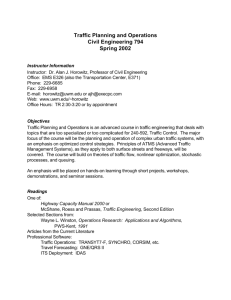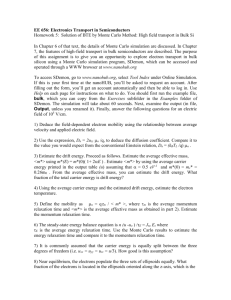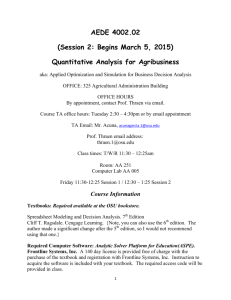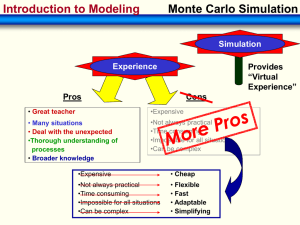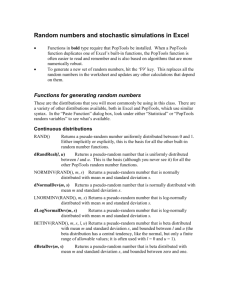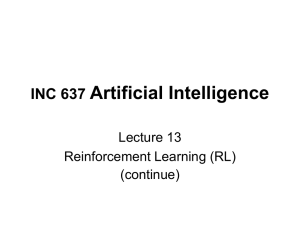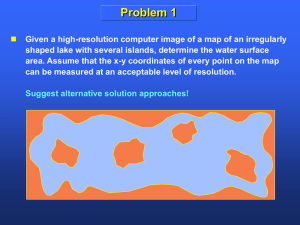Monte Carlo Simulation
advertisement
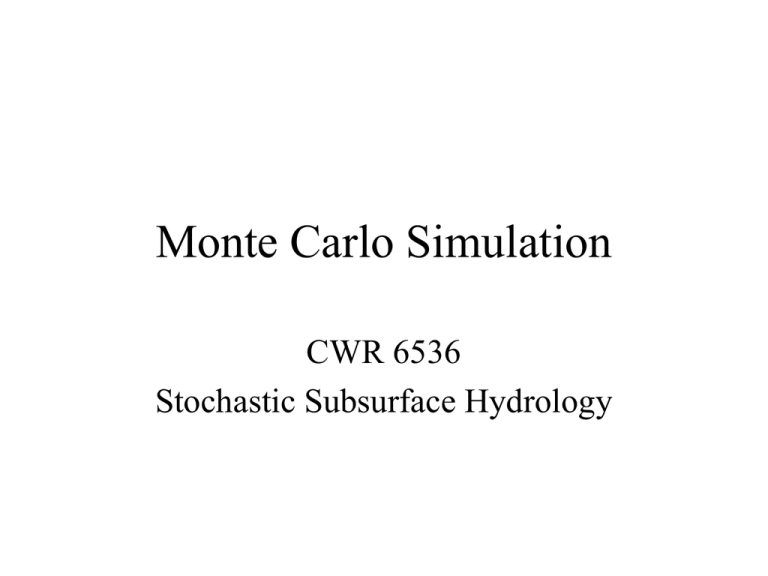
Monte Carlo Simulation CWR 6536 Stochastic Subsurface Hydrology Steps in Monte Carlo Simulation • Create input sample space with known distribution, e.g. ensemble of all possible combinations of v, D, q, m values • Run each realization of v, D, q, m values through model to produce output sample space • Repeat experiment many times to get accurate representation of input sample space and accurate statistics of output sample space • Calculate statistics of output sample space, i.e. pdf, mean, variance, etc. as a function of location Steps in Monte Carlo Simulation Primary questions to ask • How to generate input samples? – are random inputs correlated with each other – are random inputs correlated in space or time • How many replicates are required to get reliable output statistics? – test input statistics to be sure they are generated correctly – test convergence of output statistics to constant values – calculate approximate number of replicates needed as get an idea of magnitude of mean and variance of the output. Generating random variables of arbitrary distribution • Generate uniform distribution of random numbers between 0 and 1 (yi) • yi can be considered the cdf of a random variable xi with the arbitrary distribution G(x) Example: Exponential Distribution y G ( x) 1 e ax 1 yi e axi ln(1 yi ) xi a • Now x is a random variable with cdf G(x) =1-e-ax and pdf ae-ax • Thus can use uniform distribution random number generator to generate random variable of any distribution Generating random fields/processes (See Deutsch & Journel, 1998; Goovaerts, 1997) • Spatially distributed random fields - Categorical indicator simulation to honor specific geometrical patterns (i.e. layering) - Sequential Gaussian simulation, LU decomposition, and/or Turning Bands generator to simulate distribution of continuous properties within geometry - Can generate conditional or unconditional simulations; must specify mean & spatial covariance structure, as well as data to be used for conditioning) • Temporally correlated random processes: – Markov process generators (specify m,s2, transition probabilities) How many replicates are sufficient? • Test input statistics for convergence to known moments • Test output statistics for convergence to constant values • Use confidence intervals to estimate number replicates required to give desired accuracy once have estimate of mean and variance of output 95% Confidence Intervals • Consider the moment estimator qˆ Prob qˆ a q qˆ a 0.95 where qˆ is sample moment and q is population moment • If qˆ is normally distributed, a=1.97 std err(qˆ ) For qˆ mˆ std error s N For qˆ sˆ std error s 2N 95% Confidence Intervals • Suppose want 95% confidence intervals to be +/10% qˆ Prob qˆ 0.1qˆ q qˆ 0.1qˆ 0.95 a 1.97 std error (qˆ) 0.1qˆ 95% Confidence Intervals • For the mean 0.1mˆ 1.97s 1.97sˆ N N 1.97sˆ N 0.1mˆ • For the std dev 2 1.97s 1.39s 1.39sˆ 0.1sˆ 2N N N 2 1.39 N 196 0.1
